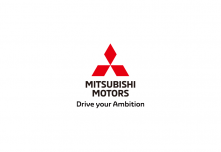
While autonomous driving technology may not exactly be taking the personal vehicle world by storm yet – though you’d never know if from the press coverage – the technology is creeping into industry in ways that look likely to take off rather quickly. There’s the case of Silicon Valley startup Peloton Technology, which is developing an augmented automated vehicle technology that allows a single driver to control more than one vehicle.
The company, which was founded in 2011 and has raised $78 million from BP Ventures, Intel Capital, Volvo Group and several other venture and strategic investors, is looking to commercially launch a partially automated vehicle platooning system that enables two (and eventually more than two) trucks to be operated at close following distances by a single driver. The company’s Level 4 Automated Following system could double the productivity of truck drivers, according to the company, and double the amount of freight that can be hauled by a single driver. The technology is currently undergoing in-house testing.
Today, the company makes what it calls a “Level One” driver assistance solution called PlatoonPro which still requires human drivers at the wheel to steer, but the automated system controls the powertrain and brakes to maintain a safely close following distance and react automatically to acceleration or braking by the lead truck. (You can see a video of this technology here.)
This “platooning” method can significantly save on fuel costs by minimizing wind drag. Fuel savings costs can be as high as 4.5 percent in the lead truck, and 10 percent in the second truck, for an overall average savings of seven percent. In the new system, human drivers won’t be necessary at all in the vehicles that follow the first.
“We’ve taken a different approach to commercial introduction of automation in Class 8 vehicles,” Peloton Technology CEO Josh Switkes told TechCrunch. “We see the drivers as the world’s best sensors, and we are leveraging this to enable today’s drivers to be more productive through automated following platoons.”












